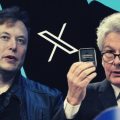The crown prince of Abu Dhabi has thrown his weight behind a huge but uncertain hydrogen project in Texas, offering to buy 35 per cent of ExxonMobil’s plant in Baytown, Houston.
Sheikh Khaled bin Mohammed bin Zayed al-Nahyan, the son of the ruler of the United Arab Emirates, took part in the signing of a “multibillion-dollar” deal on Wednesday between Adnoc, Abu Dhabi’s state oil company, and Exxon.
Michele Fiorentino, executive vice-president of Adnoc’s low-carbon solutions, said the Baytown project was both “the largest, and most importantly, one of the most cost-competitive” attempts to make hydrogen without releasing large quantities of carbon dioxide. He said Adnoc’s investment was “very material, easily at the multibillion-dollar scale”.
He suggested that Adnoc would also invest further “if the market develops faster and bigger than we planned” to expand the plant with additional capacity.
Adnoc’s interest in Baytown may help unlock a project that has been left in limbo over how much US government support it will receive, with added uncertainty because of the presidential election in November.
“How certain is the political landscape in the US? We will push on with the project on the assumption that everything will be good and well by [the time we take our] final investment decision,” said Fiorentino, adding that the US and UAE signed an agreement in December 2023 to co-operate on clean energy.
The deal will be a boost to the Baytown project, which will be the largest low-carbon hydrogen plant in the world if it goes ahead. The plant aims to produce 1bn cubic feet (bcf) a day of “blue” hydrogen, which is made from gas but with technology to capture the resulting carbon emissions.
Before the Adnoc deal, the future of the project had been in doubt. Last December, the US Treasury issued draft guidelines for how it would allocate tax breaks to hydrogen plants, which did not mention blue hydrogen facilities such as Baytown.
In March, Exxon’s chief executive Darren Woods threatened to drop the project if it did not qualify for government incentives.
Martin Tengler, head of hydrogen research at BloombergNEF, said the investment showed that Adnoc had “reasonable confidence to believe that this project will be making them some money down the line”. He said Baytown would probably be the largest US clean hydrogen project operational by the end of the decade.
“Exxon is not the kind of company that needs a bailout at this moment,” said Tengler.
A lack of clarity over which hydrogen projects will qualify for lucrative tax incentives available under President Joe Biden’s Inflation Reduction Act has already caused delays. Nel Hydrogen, an electrolyser manufacturer, recently paused its $400mn factory project in Michigan over this uncertainty.
Tengler said investors are also waiting to see if Donald Trump is re-elected president and makes big changes to US energy policy. “We don’t think Trump or the Republicans would scrap it [tax breaks], but they might make the rules more lenient. If you know that that might happen as an investor, you’re going to wait.”
A statement from Exxon said the deal with Abu Dhabi was “contingent on supportive government policy and necessary regulatory permits” and that a final investment decision on the project would be made next year, with production planned for 2029.
“We appreciate His Highness Sheikh Khaled bin Mohammed bin Zayed al-Nahyan’s support for this groundbreaking partnership,” said Woods.
By 2030, the US is expected to become the world’s largest hydrogen producer, with blue hydrogen generated by gas, composed mainly of methane, making up more than three-quarters of production, according to BNEF. Green hydrogen, generated by renewable electricity, will make up the remaining amount.
But analysts say hydrogen projects face a struggle to secure funding and customers, with BNEF estimating that only 6 per cent of US projects have secured binding supply agreements.
Fiorentino said the Baytown plant would supply Japan and Korea with ammonia to burn in its power sector and hydrogen to refineries in Europe.


